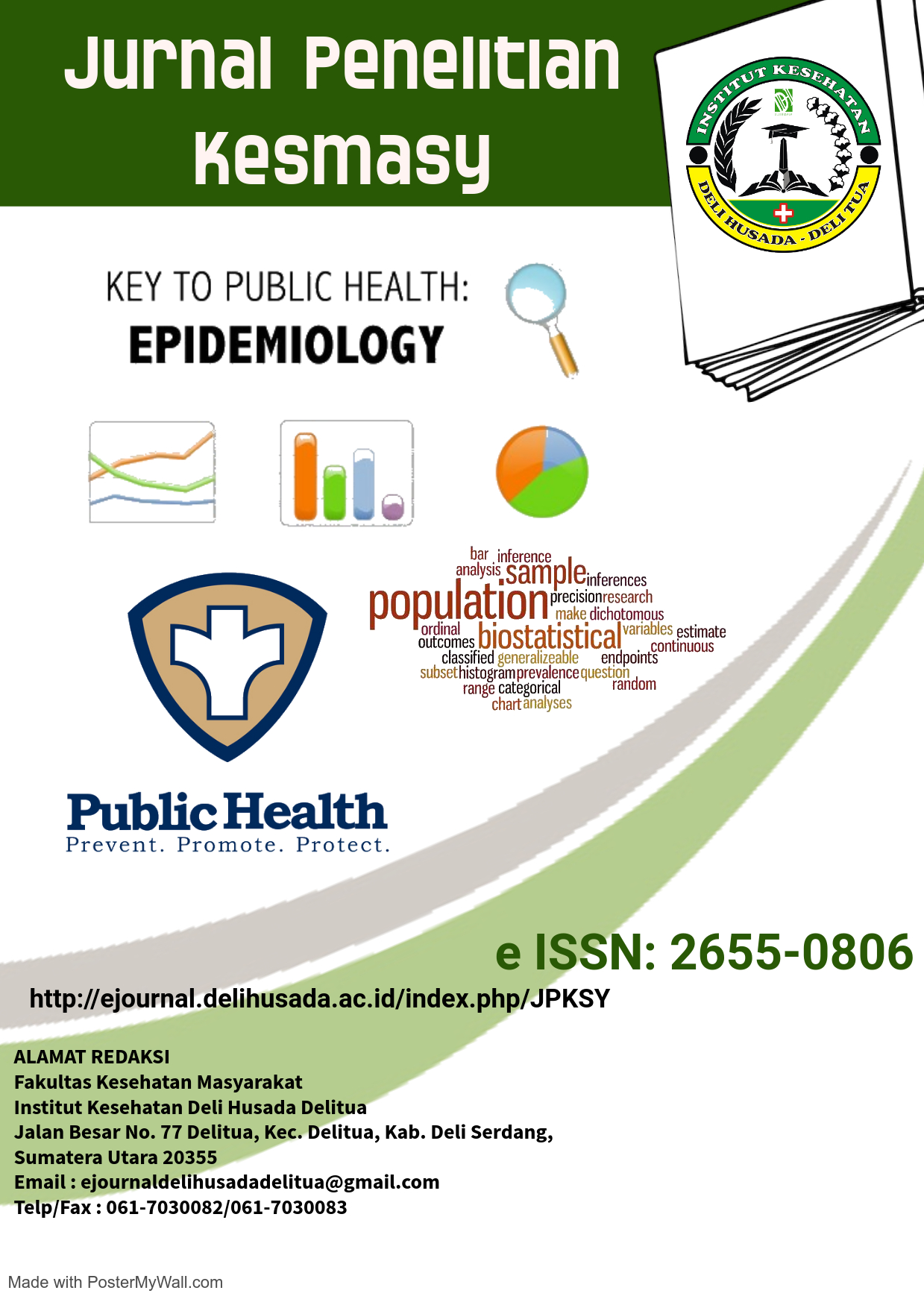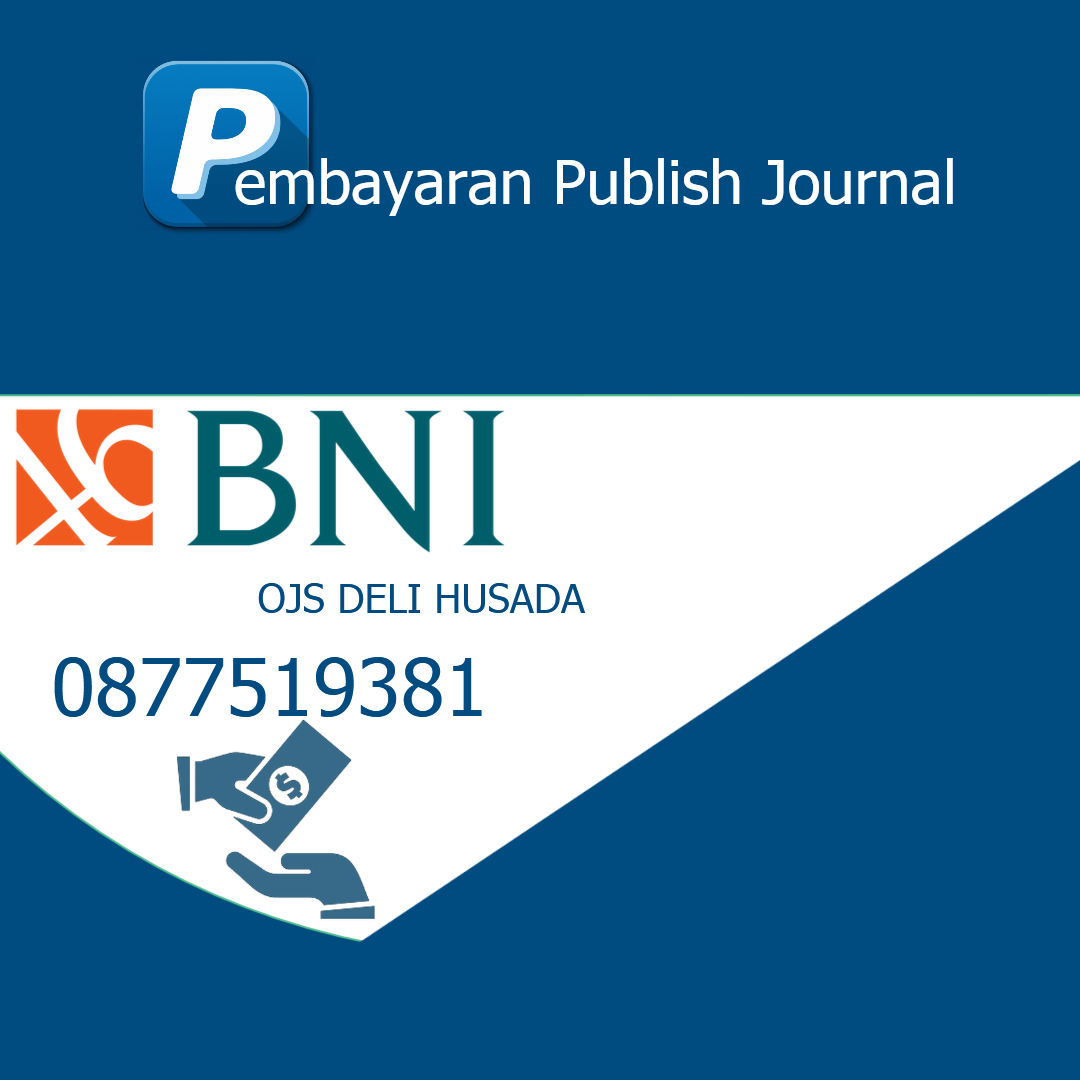Analisis Pengetahuan Perilaku Hidup Bersih dan Sehat (PHBS) pada Anak Usia Sekolah di SMP 1 Methodist Kutalimbaru Tahun 2024
Abstract
Prevention of sickness, establishment of a healthy, disease-free environment, and enhancement of physical health are the goals of a clean and healthy living (PHBS) initiative in the school setting, which is a collaborative effort between students and teachers. Schools may play a crucial role in educating the public about the significance of living a healthy, clean lifestyle. The health of kids may be greatly improved by doing simple things like using soap to wash hands and eating nutritious food from the school cafeteria. In order to have a better idea of what elementary school-aged kids know about PHBS, or clean and healthy living behaviors, this study is collecting data. This study used a descriptive quantitative research strategy. Researchers at Kutalimbaru 1 Methodist Middle School in Deli Serdang Regency administered a questionnaire to students in the fall of 2023 to gauge their level of familiarity with the concept of clean and healthy living behaviors (PHBS). Thirty participants were surveyed for this research, with ten participants drawn from each of the three grade levels (Seventh, Eighth, and Ninth). According to the interview results, most students at SMP 1 Methodist Kutalimbaru have a good understanding of Clean and Healthy Living Behavior (PHBS). However, when it comes to actually practicing what they've learned, there are some big gaps. For example, 18 out of 30 students still don't wash their hands before and after eating, and 22 out of 30 students still don't eat hygienic food, which can lead to infectious diseases like diarrhea. In order to implement PHBS in school-aged children, support from parents, teachers, and school facilities is necessary.
Keywords: Knowledge, Clean and Healthy Living Behavior, School Age Children
References
Departemen Kesehatan RI. 2008. Pedoman Pengelolaan Promosi Kesehatan Dalam Pencapaian Perilaku Hidup Bersih dan Sehat (PHBS). Jakarta. Departemen Kesehatan
Fitri, Anisa. Gambaran Pengetahuan Dan Perilaku Cuci Tangan Pakai Sabun (CTPS) pada Siswa Sekolah Dasar Di Wilayah Kerja Puskesmas Negara Ratu Kecamatan Sungkai Utara Kabupaten Lampung Utara Tahun 2019. Jurnal Ruwa. ISSN: 1978-6204. Vol 13 No. 1.
Isnaini, A., Indah, MF., Ishak, NI. 2020. Knowledge Relations, Support Parents And Teachers With The Behavior Of Hand Wash Soap in Grade VIII Students in SMPN 15 Banjarbaru Years 2020. Universitas Islam Kalimantan Muhammad Arsyad Al-Banjari.
Kementerian Kesehatan Indonesia. 2018. Profil Kesehatan Indonesia Tahun 2017. Jakarta. Kementerian Kesehatan RI
Lamberti, L. M., Fischer Walker, C. L., Noiman, A., Victora, C., & Black, R. E. (2011). Breast- feeding and the risk for diarrhea morbidity and mortality. BMC Public Health, 11 (SUP- PL. 3), S15. https://doi.org/10.1186/1471- 2458-11-S3-S15
Lestari T. 2015. Kumpulan teori untuk kajian pustaka penelian kesehatan. Yogyakarta: Nuha Medika
Notoadmojo. Metodologi Penelitian kesehatan. Jakarta. Rineka Cipta
Resiyanthi, NKA., Maepiani, NK., Sari, NAME. 2021. Gambaran Faktor-Faktor Yang Mempengaruhi Perilaku Hidup Bersih dan Sehat pada Anak Usia Sekolah. Jurnal Keperawatan. e-ISSN: 2549-8118. Vol 13 No 2.
Riskesdas. 2019. Riset Kesehatan Dasar. Badan Penelitian dan Pengembangan Kesehatan. Kementerian Kesehatan RI
Tamanampo, KL., Renteng, S., Simak, FV. 2023. Hubungan Peran Orang Tua tentang Jajanan Sehat Dengan Sikap dan Kebiasaan Jajan Anak di SD Negeri Kalasey Kecamatan Pineleng. Mapalus Nursing Science Journal. ISSN: 3026-1198. Vol 1 No 2 Hal 6 – 11.







